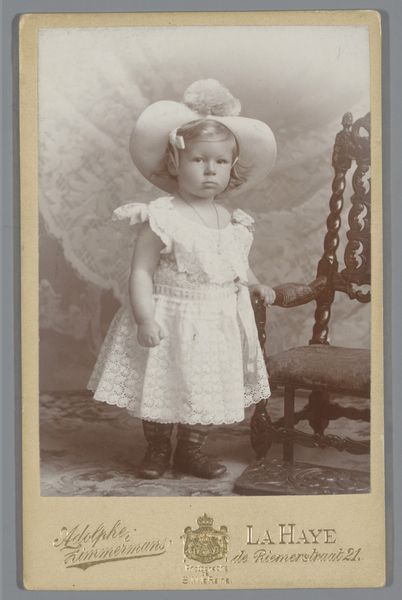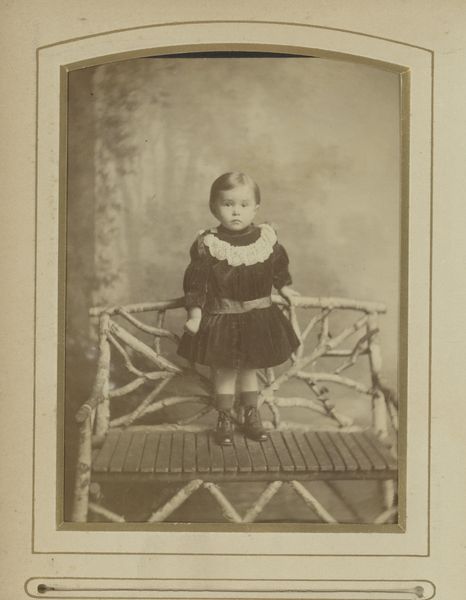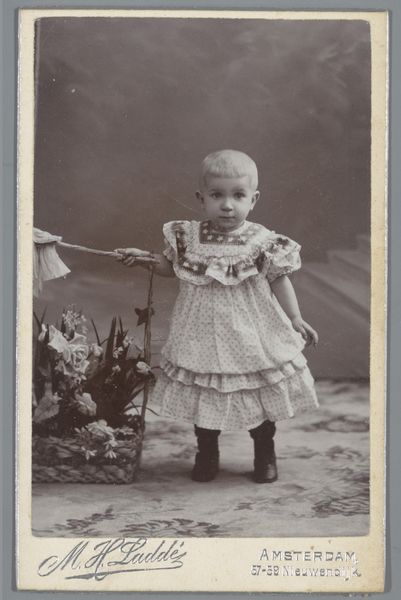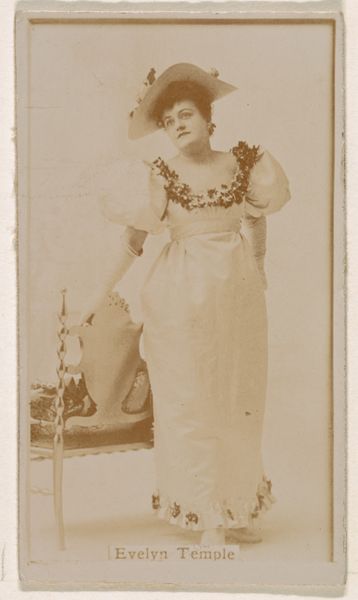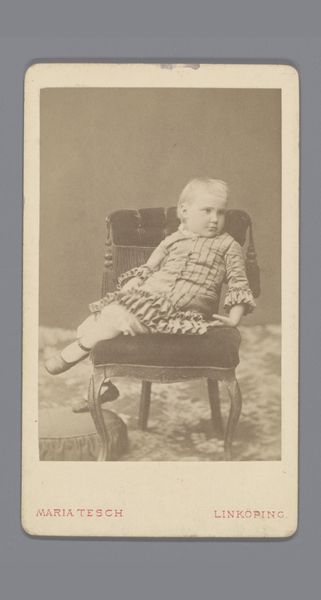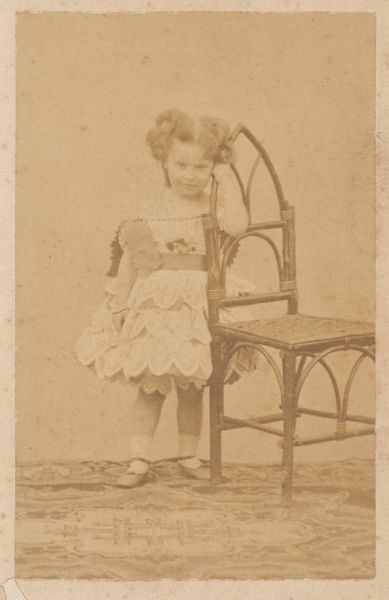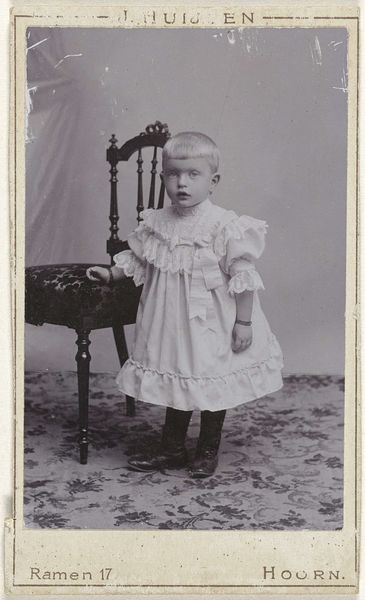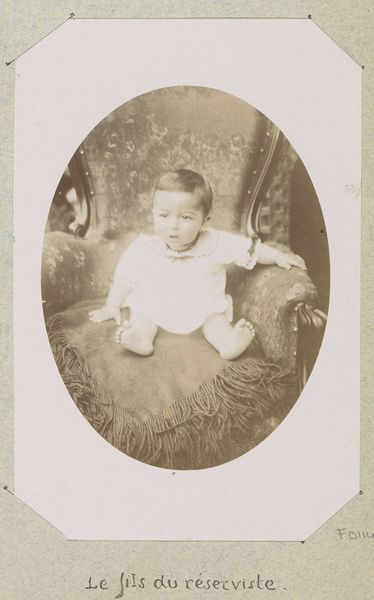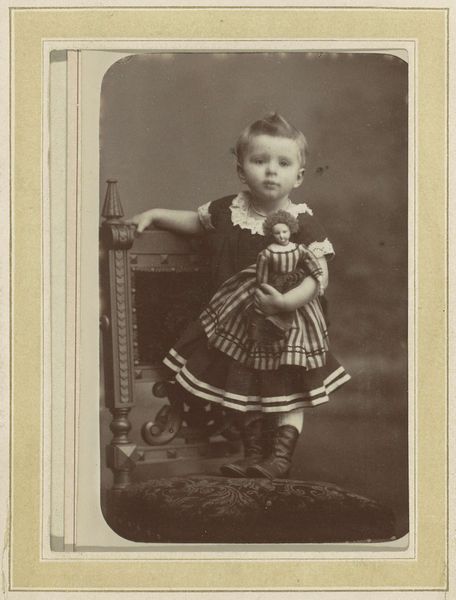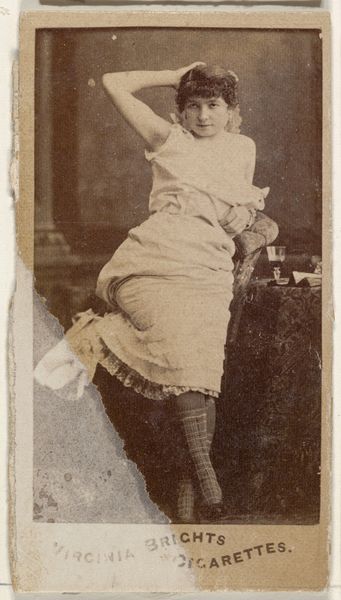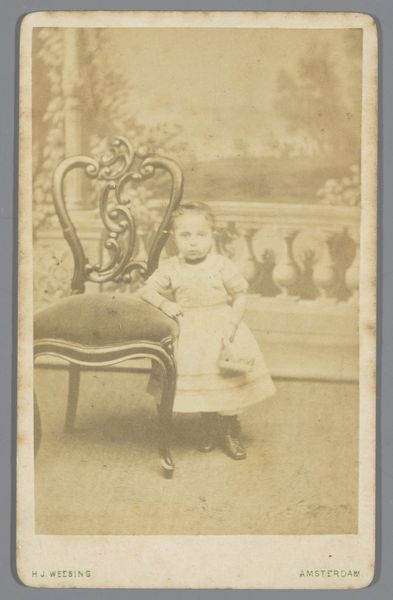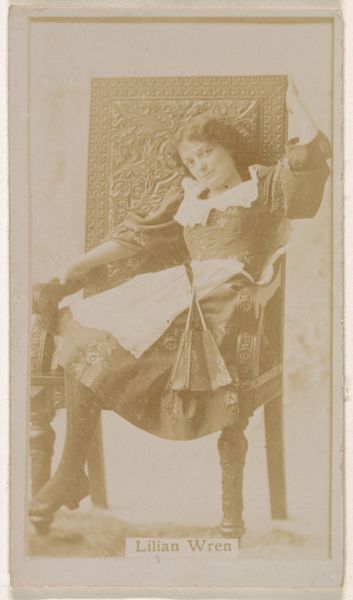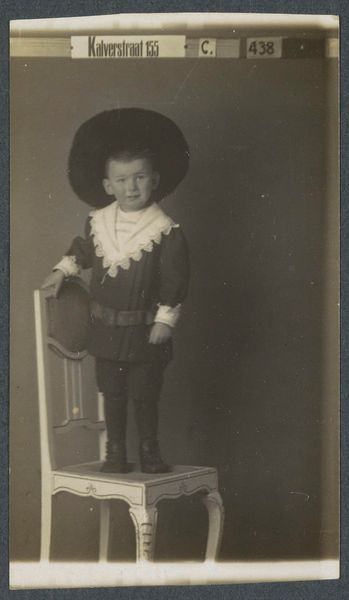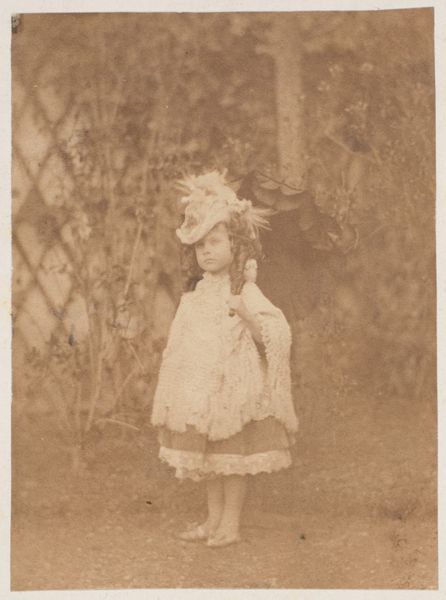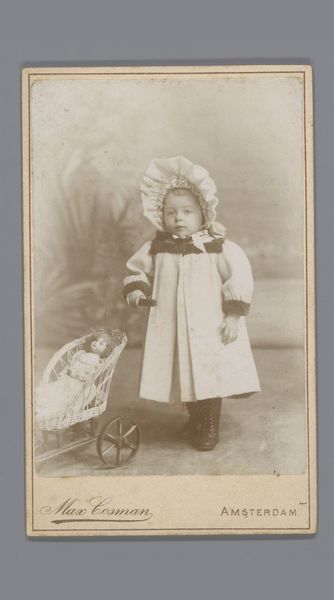
photography, pencil
#
portrait
#
photography
#
historical photography
#
pencil
Dimensions: height 224 mm, width 167 mm, height 268 mm, width 199 mm
Copyright: Rijks Museum: Open Domain
Curator: So much gravitas for such a young child! There's a peculiar solemnity to this image. Editor: Absolutely, and that somber tone feels heightened knowing what the world looked like back then. What we have here is a photographic portrait entitled "Family Life at Pavia House in Zeist," dating back to 1897. Curator: Oh, a photographic portrait, yes, but almost rendered like a painting, wouldn't you say? There's a distinct quality to the way light drapes on his sailor suit and that fabulous oversized hat! It reminds me of images painted in that time, before World War I ushered the West into a whole different vibe. It’s hard to imagine what it was like back then. Editor: Agreed. Given the time, place, and apparent wealth, the young boy could be positioned within the context of fin-de-siècle Europe, embodying societal expectations around class and childhood innocence—although his expression subtly disrupts such readings. Think about it: The boy's pose, attire, and setting were very consciously arranged. Curator: Definitely. He’s like a little grown-up already carrying the burden of expectation on those tiny shoulders! Do you see a narrative suggested? What’s with the house or building facade as backdrop? Why is it that every time I view portraits from this era, I feel so distant from their humanity—separated by a vast chasm of time and cultural conditioning? Editor: Those curtains create a soft focus effect, as though one is looking at a tableau vivant staged for posterity! And that ornate trunk becomes like an imperial throne for a would-be ruler! One might say such constructed settings and poses aimed to solidify social standing during an age of massive societal change. The picture is of Henry Pauw van Wieldrecht; what can we say of this person based on what's shown? Curator: It’s really got me thinking about the nature of identity. How much of who we are is innate, and how much is carefully cultivated by our surroundings, expectations and of course, resources. So heavy... Editor: Indeed, what is revealed depends greatly on who controls the camera. And who gets to speak, which is exactly what we're doing here, hopefully to invite people to find more.
Comments
rijksmuseum almost 2 years ago
⋮
These photographs reveal Pauw van Wieldrecht’s development from amateur to exceptionally talented photographer. His key subjects were family and domestic life in and around the family homes, travels, outings, and hunting. We see the photographer’s nephew Reinier (1897), brother Maarten defending himself from a charging (stuffed) wild boar (May 1898) and the domestic staff (August 1897).
Join the conversation
Join millions of artists and users on Artera today and experience the ultimate creative platform.
